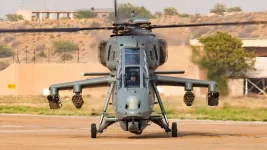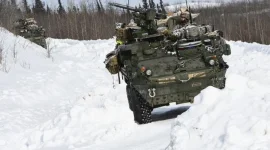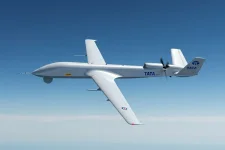- Views: 822
- Replies: 9

India's Innovation for Defence Excellence (iDEX) initiative is driving the future of defence logistics with its ADITI #1 challenge. This challenge seeks visionary proposals for a Two-Man Tactical Aerial Vehicle (TM-TAV) designed specifically for high-altitude operations.
This groundbreaking aircraft, classified as a Personal Aerial Vehicle (PAV), will leverage electric Vertical Take-Off and Landing (eVTOL) technology, transforming military and civilian operations.
The Rise of eVTOL and the Promise of the TM-TAV
The TM-TAV is a product of rapid advancements in eVTOL technology. These aircraft offer the flexibility like a helicopter with the efficiency and potentially lower environmental impact of electric propulsion.The TM-TAV goes further by providing a cabin/cockpit spacious enough for a pilot and a significant additional passenger or payload. This opens the door to unprecedented versatility in high-altitude applications.
Key Features and Implications
- eVTOL Capability: The TM-TAV's ability to take off and land vertically eliminates the need for runways. This gives it incredible operational flexibility, allowing it to function in rugged terrain and confined urban environments where traditional aircraft are restricted.
- Low-Altitude, Short & Medium-Haul Transport: The TM-TAV is envisioned for swift point-to-point movement of personnel and cargo. This could revolutionize military logistics, enabling rapid troop deployments and resupply missions even in challenging environments.
- Enhanced Strategic Flexibility: The on-demand air mobility offered by the TM-TAV would give both military and civilian operators a new level of agility. Forces could respond to threats more quickly, humanitarian aid could be delivered with greater speed, and critical infrastructure could be accessed and maintained in remote mountainous areas.
A Logistical Revolution
The potential impact of the TM-TAV extends far beyond battlefield operations.By introducing a new dimension to transportation, it promises to reshape logistical networks both within India and in similar geographies around the world.
Supply chains will gain resilience, and the rapid delivery of goods and services to isolated or inaccessible areas becomes feasible.
The Future Takes Flight
The iDEX initiative is at the forefront of defence innovation, and the ADITI #1 challenge exemplifies its commitment to driving cutting-edge technology.The realization of the Two-Man Tactical Aerial Vehicle promises to transform how we think about transportation, security, and humanitarian operations in high-altitude regions.
India seeks not only to develop a revolutionary tool but to position itself as a leader in the emerging field of eVTOL aircraft.




